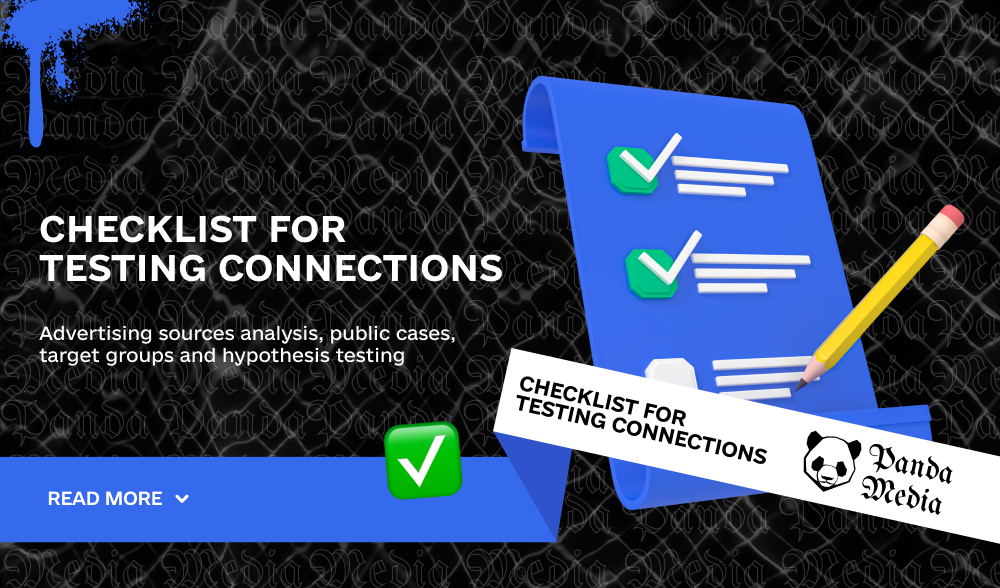Don't miss interesting news

In this article, we’ve put together a checklist for testing your campaigns. You will learn what aspects of your campaign are subject to testing, and how to test different components of advertising relationships to continuously improve results and increase revenue.

Traffic sources include web platforms and advertising networks that attract the target audience. During the first pour, it is critical to decide on the choice of source to achieve the best performance. You need:
If you are splitting your budget into several advertising sources, the first step is to launch a test campaign, after which it is important to evaluate the following key indicators:
The main task is to identify which metrics showed the best results and which strategies were the most productive. It is recommended to use the same settings for all tests, targeting audiences with comparable characteristics to identify what factors influenced the results. Varying your targeting and reaching different segments of your target audience across different channels can also help you reach more accurate conclusions.
Using publicly available cases for testing does not imply copying them exactly. This is impractical for several reasons:
However, case studies can be useful, especially for beginners. They provide valuable insights and understanding of different approaches. The author of a case study may suggest a certain methodology that you should try to adapt to your conditions. Cases stimulate the development of observation skills and allow you to learn new strategies and techniques.

For each offer, you can detail the target audience by different criteria. For example, you can take into account age groups, gender, geo, and motivation to buy. Some people prefer to order online because of the lower price, while others value online purchases because of positive reviews and higher efficiency of products compared to those sold in pharmacies. Certain groups of target audiences buy goods not for themselves, but for the older generation or their spouses. For example, in traditional Middle Eastern countries, men often buy products for women in their families.
To effectively test each segment, it is useful to create a detailed profile of a typical buyer, including the following aspects:
It will also be valuable to study the cultural nuances specific to the region of consumers. It is recommended to ask your manager for statistics and insights from other arbitrageurs who have successfully implemented similar offers. This will help you better understand the needs and expectations of your target audience.
After receiving all the necessary information, you can start developing different variants of advertising groups and creatives for each segment.

An effective method for testing assumptions is to conduct A/B testing or split testing. This process requires at least two variants: basic and experimental.
The baseline variant is usually based on data from previous studies. For example, in the previous advertising campaign, targeting parameters A, B, and C were used. The experimental variant involves modifying these parameters, for example, to A, E, and D.
When analyzing the test results, it is critical not to limit yourself to profit analysis. It is necessary to take into account that despite the possible high profit, a marketer may face an increase in the cost of a click and other expenses, which affects the overall profitability. A full cost-effectiveness assessment is a key element of a successful strategy.

Before you start evaluating a creative or web page, it’s important to clearly define which elements are to be analyzed. These elements may include design style, element layout, headlines, textual content, graphic design, typography, and call-to-action (CTA) elements. It is also possible to test different marketing approaches, such as the medical approach, focus on problems, interview structure, etc. You can read more about the variety of approaches in our previous post, which we highly recommend reading.
To conduct testing, you need to prepare at least two versions of materials, for example, with different headlines. After the start of the screenings and the collection of primary data, you should carefully analyze the performance indicators to identify which elements received the greatest response from the audience.
How to effectively test advertising creatives:
This approach ensures that you can accurately assess how different elements of creativity affect audience interest and marketing goals.
Creative elements to optimize:
In conclusion, it is important to analyze performance indicators. The evaluation should be carried out comprehensively. For example, if you get fewer leads in one test and more in another, it doesn’t always mean that the second option is more beneficial. The cost of lead acquisition in the second case may be higher, which reduces the overall ROI.
Experimentation is the most effective method for determining the best combination in work. When conducting tests, it is extremely important to conduct a comprehensive analysis, taking into account not only individual indicators, such as CTR changes but also evaluating the overall picture across all metrics. This approach allows you to identify the best combinations and create examples that can be used in various advertising campaigns and offers.